[Jeu de temps / Times Play 2016]
Winning Works and Composers
Winners / Gagnants (https://www.econtact.ca/19_1/winners.html) | Submissions / Soumissions (https://www.econtact.ca/19_1/submissions.html) | Events / Événements (https://www.econtact.ca/19_1/events.html) | Awards / Prix (https://www.econtact.ca/19_1/awards.html) | Jury (https://www.econtact.ca/19_1/index.html#jury)
For each edition of JTTP, a broad and diverse international jury has the task of judging all submissions to the project. The composers of the five top-placing works receive prize packages consisting of CDs, DVDs, books and magazine subscriptions, and the composers of the top three works additionally receive cash prizes. The many generous JTTP 2016 Project Partners, Financial Donors and Media Partners are listed on the Awards, Project Partners and Support (https://www.econtact.ca/19_1/awards.html) page. Over the course of the 2016–17 year, the top five works (listed below) are presented in a number of Events, Concerts and Radio Broadcasts (https://www.econtact.ca/19_1/events.html) coordinated with our Media Partners. Check out the Participants and Submissions (https://www.econtact.ca/19_1/submissions.html) page to hear all works submitted to this year’s edition of JTTP, and to read programme notes and composer biographies.
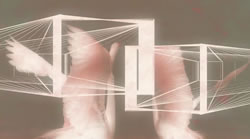

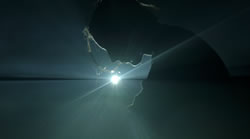
- Myriam Boucher — Nuées (2016 / 10:02) [videomusic]
Nuées is a videomusic work that arose from the idea of flapping wings. The recordings were made with the baritone saxophonist Ida Toninato in an immense desertic and reverberant space at night. The birds were recorded mid-flight.
Myriam Boucher is a Montréal-based composer and video artist. She has been part of different artistic projects in the North American music scene, from her early experiences as keyboardist for various instrumental music bands through to her visual work, she works on the intimate dialogue between music and image. Myriam creates videomusic, electroacoustic, mixed and instrumental music, as well as audiovisual performances.
http://vimeo.com/user20638366
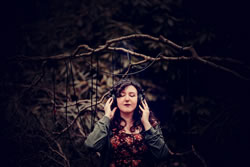
- Vanessa Massera — Éclats de feux (2016 / 10:08)
Transitional work of my journey in composition, Éclats de Feux started with many sound recordings of objects and spaces found around Sheffield. As the first piece of my doctoral portfolio, this one acts as a bridge between the school of Montréal, where I come from, and the effervescence of British acousmatic. In this piece, I explored the contrasts between powerful masses and up-close solo objects, with particular sensitivity to the use of space in stereophony, as my research is focused on the interpretation and performance of acousmatic music. The title refers to the impressive bonfire nights and endless fireworks I have been exposed to in the first weeks after my arrival in the UK. “Shards of Fire”, as it translates, also represents the extreme rapidity and intensity with which one’s life may be completely changed with one single voyage.
Vanessa Massera has recently moved to the UK to undertake research in performance in electroacoustic music, with the intention of completing a PhD at The University of Sheffield. Her current preoccupations with the dissemination of experimental music have brought her to explore the present traditions we may and may not have, investigate the legacy of our community and work toward finding ways of a maximised outreach. There is often a sense of place and environmental energy in her music: places shift, spaces evolve, perspectives change. These ever-evolving environments are a natural starting point for research on the subject of performance of electroacoustic music: How does one effectively transpose one space — encoded onto a hard disk — to a second one, which is live, and in which one constantly receives new information?
http://vanessamassera.com
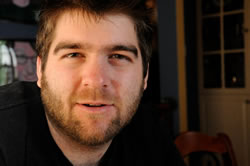
- Jérémie Ricard — Corrosion des alliages (2016 / 7:19)
CORROSION: Conversion of a material by a chemical reaction with an oxidant that causes a degradation of its properties. Corrosion is nothing more than the process by which metal forged by humans returns to its natural state. ALLOY: Combination of a metallic element with one or more other chemical elements. In Corrosion des alliages [Corrosion of Alloys], a collection of all sorts of metallic sounds held together with (chemical) processing elements creates new alloys. After they have been assembled, an oxidizing agent corrodes the structure, causing it to return to its original form.
From 2000–2005, the Louisevillois Jérémie Ricard studied music, recording and sound reinforcement at Cégep de Drummondville. At that time, he was introduced to electroacoustic music and their creation methods. Since then, he has been fascinated by all kinds of sounds around him and has showed a particular interest in them. Following his studies he participated in several recording and mixing sessions in the studio but his work over the past ten years has mainly been as soundman. He also played drums in several musicals projects where he took the opportunity to improve his mixing and sound recording techniques by recording each and every rehearsal. Over the years, he made some sketches of composition that tended towards electroacoustics, and finally in autumn 2015 he decided to deepen his knowledge of this musical style by returning to study at Université de Montréal.
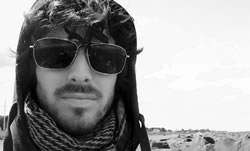
- Samuel Béland — Biodôme (2016 / 8:49)
R. Murray Schafer has described “schizophonia” as a cognitive dissonance condition created by the situation of electroacoustic listening. Contrary to the natural world, where each sound is the result of a physical entity presented in a defined space, amplification offers the possibility of representations whose source is entirely absent and for which the scale, space and origin create contexts that do not at all resemble “reality”. A biodome is a museum of ecosystems, a sort of “pure” exterior, exotic and grandiose, in which the trees are fake, the forest painted, the light unconnected to the sun and animals live within an imitation of a natural habitat. Humans come to admire the fantasy of a world without humans. Biodôme is the representation of a space that is already schizophonic.
Samuel Béland is currently studying electroacoustic composition with Martin Bédard at the Conservatoire de musique de Montréal. In addition to electroacoustic music, he is particularly interested in the videomusic medium and algorithmic composition, as well as the sociology of art.
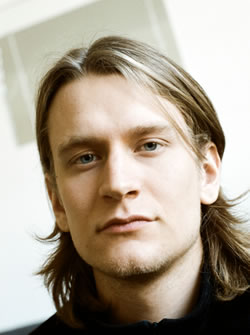
- Paul Tremblay — Drag (2016 / 7:34)
In physics, forces acting the opposite way when two bodies are in movement relative to each other define the concept of resistance and friction. The narrative of the piece follows those bodies creating different actions. Through each of the movements, the bodies are translated and adapted by those different agitations and transform the physical reality of the sounds.
Paul Tremblay is a Montréal-based artist. His work is based on exploring different ways and ideas of creating an immersive non-linear narrative by incorporating different mediums like sound, drawing, sculpture and installation. He is currently studying in the electroacoustic major at Concordia and will be heading in the studio art major.
Social top